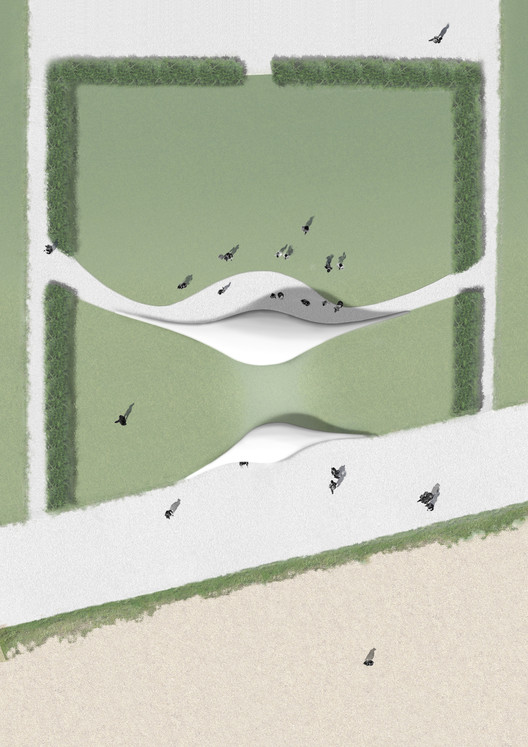
-
Architects: Flanagan Lawrence
- Year: 2014

Text description provided by the architects. Sited in a sunken garden beside the beach in Littlehampton, West Sussex, UK, these ‘Acoustic Shells’ act as a stage and shelter for the local community. Prompted by a desire to reinvigorate Littlehampton with its gentility of the early 20th century, the shells materially enhance the public open space of the adjacent greensward and satisfy an essential social need that is not provided elsewhere in the area.

The concept for the shells is derived from the notion of a traditional bandstand; following the industrial Revolution and worsening conditions in urban areas, bandstands were conceived as a response by local authorities to an increased need for green open spaces where the general public could relax. Following the first bandstand in Britain in the Royal Horticultural Society Gardens in South Kensington in 1861, bandstands became hugely popular, and were subsequently installed in parks across the country. Competing with new medias in the 20thC; cinema and television, bandstands lost their appeal, and fell into disuse.

However, the new world of social media has further democratised the production and distribution of music. No longer the preserve of elite musicians, popular music is now being made by anyone, and played anywhere, whether this is online, or in public. The Acoustic Shells are a response to this context, bringing back an old ideal, an architecture that can represent ‘sound’, and the people that made it.

One shell faces the town and forms the principal bandstand. The acoustic design of the interior creates a reflective surface to project the sound of the performers to the audience in the sunken garden. The other shell faces the beach and forms a more intimate structure as a shelter for listening to the sound of the sea or for buskers to perform facing the promenade.

The shell structures have been created without formwork with the concrete sprayed directly on to the reinforcement mesh. The majority of the concrete shell is only 100mm thick and relies on the double curved geometry to span the stage.

The two shells appear like white land forms emerging from the grass of the greensward. This reflects the historical context of the concrete sound mirrors along the south coast at Dungeness, and the visually striking form of the local sand dunes.

The project was won in competition in 2012 and it has been completed in time to be used during the summer of 2014.
















